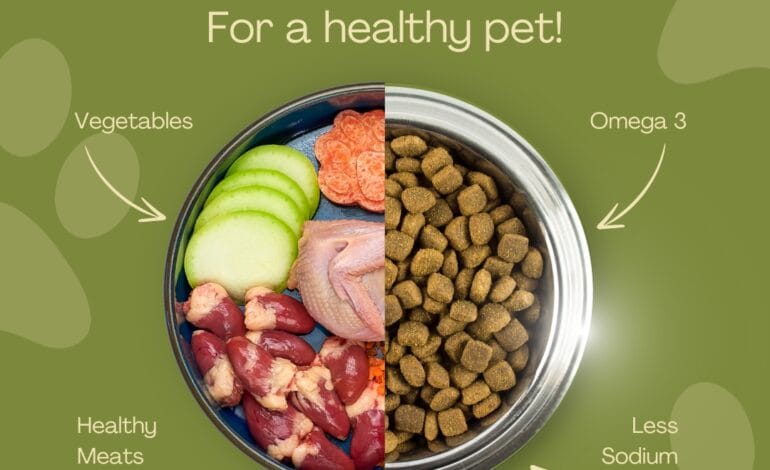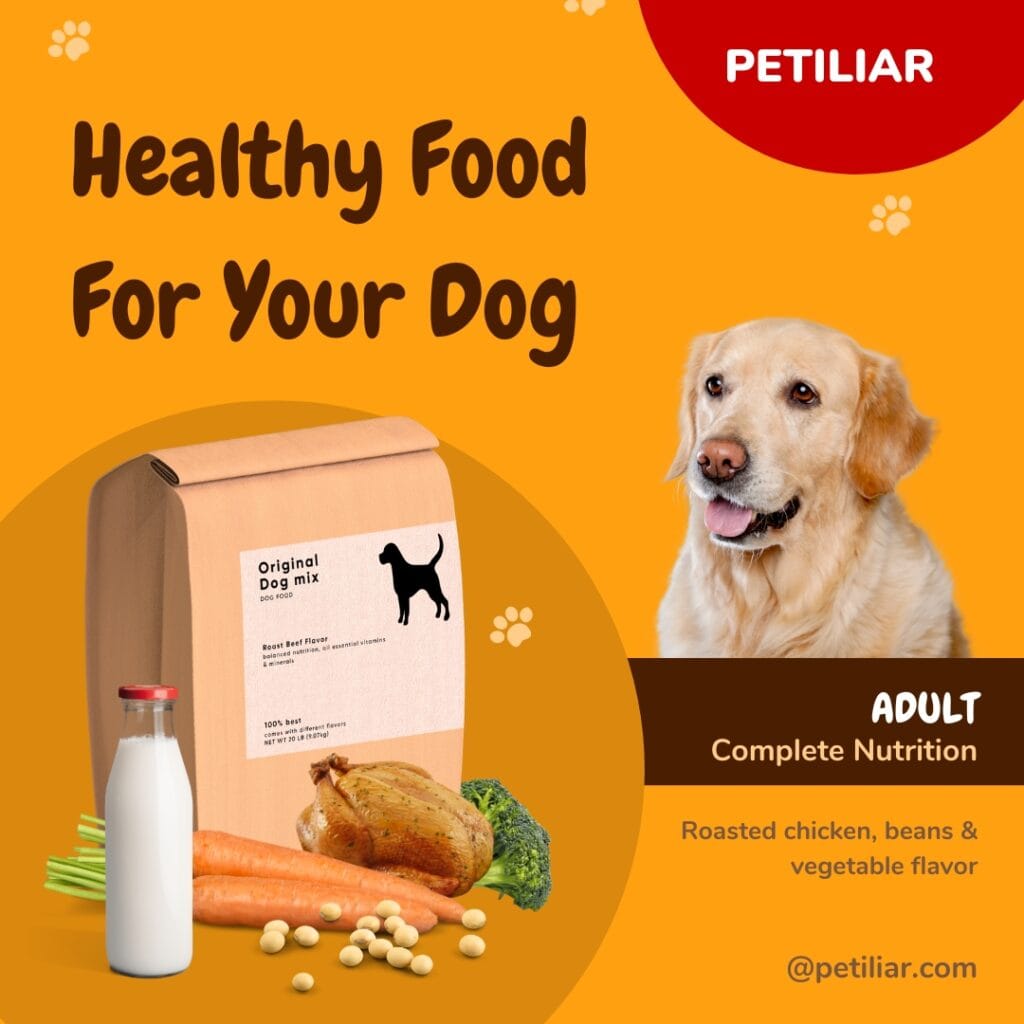
The Ultimate Guide to Fresh Pet Dog Food.
What Is Fresh Pet Dog Food?
Fresh pet dog food is a type of pet nutrition made from natural, minimally processed ingredients. Unlike traditional kibble or canned food, fresh dog food consists of high-quality meats, vegetables, and essential nutrients without artificial additives or preservatives. This diet closely resembles what dogs would eat in the wild, providing optimal nutrition and health benefits.
Many pet owners choose fresh food because it offers superior nutritional value compared to commercial dog food. Fresh food lacks unnecessary fillers, artificial flavors, and animal by-products, making it a healthier choice for dogs of all breeds and sizes. Additionally, fresh food can be customized to meet a dog’s specific dietary needs, whether they require a high-protein diet, grain-free options, or allergen-free meals.
Veterinarians and pet nutritionists often recommend fresh food for dogs with allergies, digestive issues, or chronic health conditions. A balanced diet helps maintain a dog’s overall health by preventing nutritional deficiencies and promoting longevity. By switching to fresh pet food, pet owners can ensure their dogs receive a well-rounded diet packed with essential nutrients.
Chewy Dog Food: The Best Choice for Your Furry Friend

Why Fresh Dog Food Is Better Than Kibble
Minimal Processing
Fresh dog food undergoes significantly less processing than kibble, preserving essential nutrients that can be lost during high-temperature manufacturing. Kibble is often cooked at extremely high temperatures, which can degrade protein quality and strip away vital vitamins and minerals. This intense processing reduces the nutritional value of the food, making it less beneficial for dogs.
In contrast, fresh dog food is lightly cooked or served raw, ensuring the retention of key nutrients that support a dog’s overall well-being. By preserving more natural vitamins, minerals, and amino acids, fresh food helps maintain a dog’s optimal health. This is particularly beneficial for dogs with sensitive stomachs, as minimally processed food is easier to digest and absorb.
Fresh food also retains natural moisture, preventing it from becoming dry and overly processed like kibble. Many kibble brands use high-heat extrusion methods that require binding agents and preservatives to hold the shape and texture of the food. This manufacturing process often results in the loss of natural flavors and nutritional benefits that fresh food retains.
No Artificial Additives
Many commercial kibbles contain preservatives, artificial flavors, and synthetic nutrients to extend shelf life. These additives can sometimes cause allergies or digestive problems in dogs. Chemicals such as BHA, BHT, and ethoxyquin are often used to prevent kibble from spoiling, but they may lead to long-term health concerns.
Fresh food provides a natural and wholesome alternative, offering high-quality, easily digestible ingredients without harmful chemicals. Since fresh food is made with whole meats, vegetables, and essential nutrients, it does not require artificial preservatives to maintain its nutritional integrity. Instead, it is stored in refrigerated conditions to keep it fresh without compromising safety.
Another common issue with artificial additives in kibble is the use of artificial colors and flavor enhancers. Many pet food manufacturers add artificial dyes to make kibble look more appealing, even though these additives serve no nutritional purpose. Some dogs may experience allergic reactions or digestive discomfort when consuming artificial ingredients, making fresh food a safer and healthier option.
Fewer Fillers
Kibble often contains fillers like corn, wheat, and soy, which provide little nutritional value and can lead to weight gain or food sensitivities. Fillers are used to bulk up the food while keeping production costs low, but they offer minimal benefits for a dog’s overall health. Some dogs have difficulty digesting these low-quality ingredients, leading to gastrointestinal issues such as bloating, diarrhea, and gas.
Fresh food focuses on wholesome ingredients such as real meats, whole vegetables, and healthy fats, ensuring optimal nutrition and better digestion. By eliminating unnecessary fillers, fresh food provides a well-balanced diet that supports muscle growth, immune function, and overall vitality. Additionally, fresh food contains a higher percentage of high-quality protein, which is essential for maintaining a dog’s strength and energy levels.
A diet free of fillers also helps prevent obesity and related health problems. Dogs that consume excessive amounts of processed carbohydrates, like those found in kibble fillers, may experience rapid weight gain and metabolic imbalances. Fresh food, on the other hand, provides a balanced approach to nutrition, with proteins, healthy fats, and fiber-rich vegetables ensuring a dog’s body functions at its best.
Better Hydration
Fresh dog food has a higher moisture content compared to kibble, helping dogs stay hydrated throughout the day. Kibble is extremely dry, with a moisture content of around 10%, while fresh food contains approximately 70% moisture. This added hydration supports kidney function, improves digestion, and reduces the risk of urinary tract infections.
Proper hydration is essential for a dog’s overall health, as it aids in nutrient absorption and helps maintain normal bodily functions. Dogs that consume primarily dry food may be more prone to dehydration, especially if they do not drink enough water. Dehydration can lead to serious health issues such as kidney disease, urinary stones, and poor circulation.
Dogs who consume fresh food are less likely to suffer from dehydration-related health problems because their meals naturally provide adequate water intake. The increased moisture content in fresh food supports digestive health by making it easier for dogs to break down and absorb nutrients. It also helps prevent constipation and other digestive discomforts caused by dry food.
For dogs that are prone to kidney or urinary tract issues, a diet with higher moisture content can be particularly beneficial. By providing fresh food with natural hydration, pet owners can reduce the risk of urinary tract infections and promote overall kidney function. Additionally, the moisture-rich nature of fresh food enhances palatability, making it more enjoyable for dogs to eat.
Why Fresh Dog Food Is Better Than Kibble
Minimal Processing
Fresh dog food undergoes significantly less processing than kibble, preserving essential nutrients that can be lost during high-temperature manufacturing. Kibble is often cooked at extremely high temperatures, which can degrade protein quality and strip away vital vitamins and minerals. This intense processing reduces the nutritional value of the food, making it less beneficial for dogs.
In contrast, fresh dog food is lightly cooked or served raw, ensuring the retention of key nutrients that support a dog’s overall well-being. By preserving more natural vitamins, minerals, and amino acids, fresh food helps maintain a dog’s optimal health. This is particularly beneficial for dogs with sensitive stomachs, as minimally processed food is easier to digest and absorb.
Fresh food also retains natural moisture, preventing it from becoming dry and overly processed like kibble. Many kibble brands use high-heat extrusion methods that require binding agents and preservatives to hold the shape and texture of the food. This manufacturing process often results in the loss of natural flavors and nutritional benefits that fresh food retains.
No Artificial Additives
Many commercial kibbles contain preservatives, artificial flavors, and synthetic nutrients to extend shelf life. These additives can sometimes cause allergies or digestive problems in dogs. Chemicals such as BHA, BHT, and ethoxyquin are often used to prevent kibble from spoiling, but they may lead to long-term health concerns.
Fresh food provides a natural and wholesome alternative, offering high-quality, easily digestible ingredients without harmful chemicals. Since fresh food is made with whole meats, vegetables, and essential nutrients, it does not require artificial preservatives to maintain its nutritional integrity. Instead, it is stored in refrigerated conditions to keep it fresh without compromising safety.
Another common issue with artificial additives in kibble is the use of artificial colors and flavor enhancers. Many pet food manufacturers add artificial dyes to make kibble look more appealing, even though these additives serve no nutritional purpose. Some dogs may experience allergic reactions or digestive discomfort when consuming artificial ingredients, making fresh food a safer and healthier option.
Fewer Fillers
Kibble often contains fillers like corn, wheat, and soy, which provide little nutritional value and can lead to weight gain or food sensitivities. Fillers are used to bulk up the food while keeping production costs low, but they offer minimal benefits for a dog’s overall health. Some dogs have difficulty digesting these low-quality ingredients, leading to gastrointestinal issues such as bloating, diarrhea, and gas.
Fresh food focuses on wholesome ingredients such as real meats, whole vegetables, and healthy fats, ensuring optimal nutrition and better digestion. By eliminating unnecessary fillers, fresh food provides a well-balanced diet that supports muscle growth, immune function, and overall vitality. Additionally, fresh food contains a higher percentage of high-quality protein, which is essential for maintaining a dog’s strength and energy levels.
A diet free of fillers also helps prevent obesity and related health problems. Dogs that consume excessive amounts of processed carbohydrates, like those found in kibble fillers, may experience rapid weight gain and metabolic imbalances. Fresh food, on the other hand, provides a balanced approach to nutrition, with proteins, healthy fats, and fiber-rich vegetables ensuring a dog’s body functions at its best.
Better Hydration
Fresh dog food has a higher moisture content compared to kibble, helping dogs stay hydrated throughout the day. Kibble is extremely dry, with a moisture content of around 10%, while fresh food contains approximately 70% moisture. This added hydration supports kidney function, improves digestion, and reduces the risk of urinary tract infections.
Proper hydration is essential for a dog’s overall health, as it aids in nutrient absorption and helps maintain normal bodily functions. Dogs that consume primarily dry food may be more prone to dehydration, especially if they do not drink enough water. Dehydration can lead to serious health issues such as kidney disease, urinary stones, and poor circulation.
Dogs who consume fresh food are less likely to suffer from dehydration-related health problems because their meals naturally provide adequate water intake. The increased moisture content in fresh food supports digestive health by making it easier for dogs to break down and absorb nutrients. It also helps prevent constipation and other digestive discomforts caused by dry food.
For dogs that are prone to kidney or urinary tract issues, a diet with higher moisture content can be particularly beneficial. By providing fresh food with natural hydration, pet owners can reduce the risk of urinary tract infections and promote overall kidney function. Additionally, the moisture-rich nature of fresh food enhances palatability, making it more enjoyable for dogs to eat.
Benefits of Feeding Fresh Dog Food
Improved Digestion
Fresh food is easier for dogs to digest because it contains natural fiber and whole ingredients. It promotes a healthy gut microbiome, reduces bloating, and minimizes the risk of constipation. Many commercial kibbles contain artificial preservatives and fillers that can disrupt digestion, making fresh food a superior choice.
Dogs with sensitive stomachs or food allergies often benefit from a fresh diet as it eliminates common allergens and irritants found in processed dog food. Natural ingredients such as lean meats, fresh vegetables, and whole grains provide essential nutrients that are easy to digest and absorb. The absence of artificial additives reduces the risk of digestive issues and supports gut health.
Healthier Skin and Coat
Fresh food is rich in essential fatty acids, vitamins, and minerals that contribute to a shiny, healthy coat and well-nourished skin. Omega-3 and Omega-6 fatty acids, found in fish oil and flaxseed, help reduce inflammation, prevent excessive shedding, and soothe dry, itchy skin.
Dogs that consume a diet high in natural, unprocessed ingredients often experience fewer skin allergies and irritations. Ingredients such as salmon, sweet potatoes, and coconut oil provide vital nutrients that nourish the skin from within. The antioxidants in fresh fruits and vegetables also help maintain healthy skin by fighting free radicals that cause damage.
Increased Energy Levels
A balanced diet with high-quality proteins, fresh vegetables, and essential nutrients helps dogs maintain higher energy levels. Dogs on a fresh diet often show improved stamina, increased playfulness, and better overall vitality. Fresh food provides the right balance of macronutrients to fuel daily activities without unnecessary additives or empty calories.
Processed kibble often contains excessive carbohydrates, which can lead to sluggishness and weight gain. In contrast, fresh food prioritizes lean proteins and complex carbohydrates that support sustained energy release throughout the day. Dogs that eat fresh food are more likely to remain active and engaged in play, exercise, and daily routines.
Better Weight Management
Fresh food provides balanced nutrition without excess carbohydrates or unhealthy fats, helping dogs maintain a healthy weight. Overweight dogs benefit from fresh food because it contains natural ingredients that support metabolism and muscle maintenance while reducing the risk of obesity-related health issues.
Many commercial dog foods contain excessive amounts of processed grains and fats, leading to weight gain. Fresh food helps maintain lean muscle mass by providing high-quality proteins and healthy fats while limiting empty calories. Dogs that eat fresh food are less likely to become overweight and more likely to maintain a balanced physique.
Stronger Immune System
A fresh diet is packed with antioxidants, vitamins, and minerals that strengthen a dog’s immune system. These nutrients help protect against infections, improve recovery from illnesses, and promote long-term health. Natural ingredients like leafy greens, berries, and lean meats provide essential nutrients that support immune function.
Reduced Risk of Chronic Diseases
A fresh food diet lowers the risk of common health conditions such as diabetes, heart disease, and arthritis. The absence of artificial additives and fillers contributes to better overall health and longevity.
Ingredients to Look for in Fresh Dog Food
High-Quality Protein Sources
Fresh dog food should include premium proteins such as chicken, beef, turkey, lamb, and fish. Protein is essential for muscle development, immune function, and overall health. Eggs and lean cuts of meat provide additional amino acids necessary for strong bones and healthy tissue.
Healthy Carbohydrates
Choose whole grains like quinoa, brown rice, or sweet potatoes. These provide slow-releasing energy and dietary fiber, which aids digestion. Avoid processed grains that can cause blood sugar spikes.
Fresh Vegetables and Fruits
Carrots, spinach, blueberries, and apples are excellent sources of vitamins, minerals, and antioxidants. Leafy greens and berries provide additional immune-boosting benefits.
Essential Fatty Acids
Healthy fats, such as Omega-3 and Omega-6 from fish oil, flaxseed, and coconut oil, promote heart health, brain function, and joint mobility.
Probiotics and Prebiotics
Adding probiotics and prebiotics to a dog’s diet supports gut health, enhances digestion, and strengthens the immune system.
Hydration-Rich Ingredients
Fresh foods like cucumbers, zucchini, and watermelon provide additional hydration, keeping dogs refreshed and preventing dehydration.
How to Transition Your Dog to Fresh Food?
Start Slowly
Mix small amounts of fresh food with your dog’s current diet and gradually increase the fresh portion over 7-10 days.
Observe Digestive Changes
Monitor your dog’s stool consistency and digestion. If issues arise, slow down the transition process.
Maintain Proper Portion Control
Consult a vet to determine appropriate portion sizes to avoid overfeeding and ensure balanced nutrition.
Best Fresh Dog Food Brands
The Farmer’s Dog
Offers human-grade, pre-portioned meals tailored to a dog’s dietary needs.
Ollie
Provides customized, fresh dog food with high-quality meats and vegetables.
Nom Nom
Delivers vet-formulated fresh meals rich in protein and essential nutrients.
Just Food for Dogs
Uses whole-food ingredients and minimal processing for a balanced diet.
Fresh pet
Refrigerated fresh dog food made with real meats and vegetables.
Homemade Fresh Dog Food Recipes
Chicken and Rice Recipe
- 1 cup cooked chicken
- ½ cup brown rice
- ¼ cup carrots
- ¼ cup peas
- 1 tbsp. fish oil
Beef and Sweet Potato Recipe
- 1 cup ground beef
- ½ cup cooked sweet potatoes
- ¼ cup spinach
- ¼ cup blueberries
- 1 tsp flaxseed oil
Final Thoughts
Fresh pet dog food provides superior nutrition, supporting digestion, energy, and overall health. Choosing high-quality ingredients ensures your dog lives a long, happy life. Always consult a vet for the best feeding plan. By switching to fresh food, you give your dog the best chance for a healthy and vibrant future.




2 Comments
[…] the moment you check in, your pup is treated like a guest. They offer dog beds, Fresh Dog Food, bowls, and even treats to make sure your furry friend feels at home. The location is also […]
You can contact for any help – raakashofficial@gmail.com